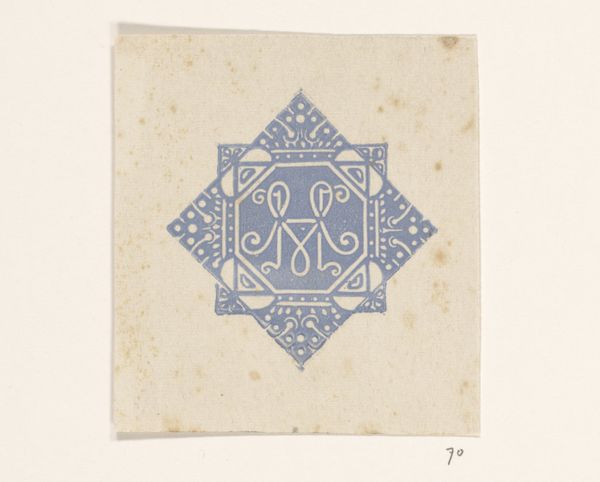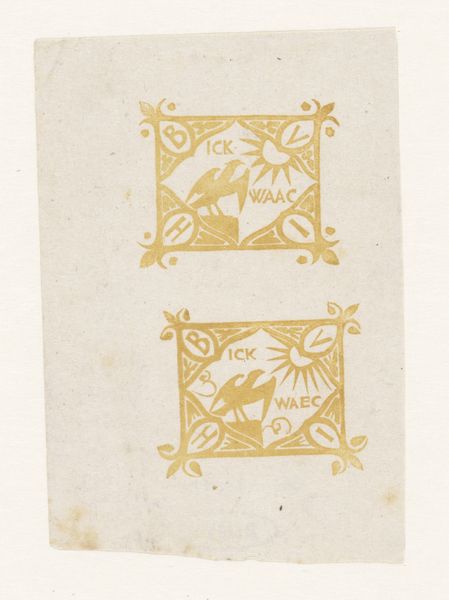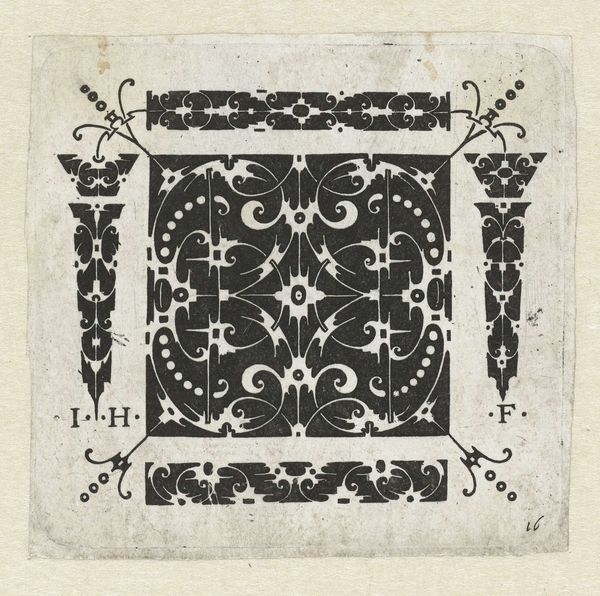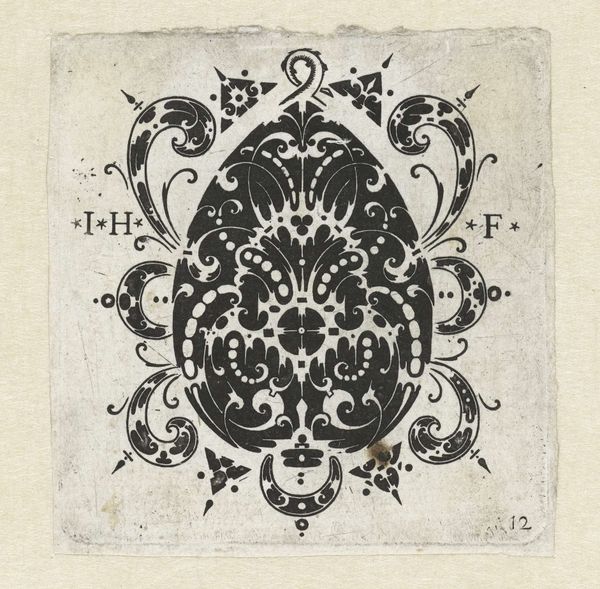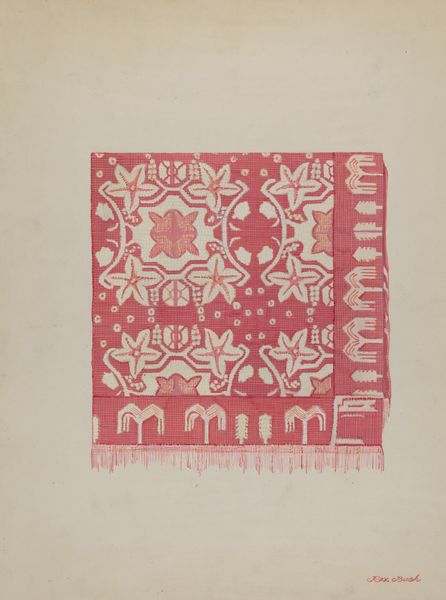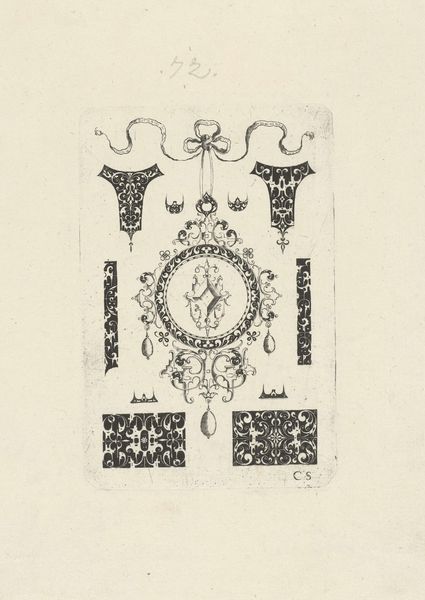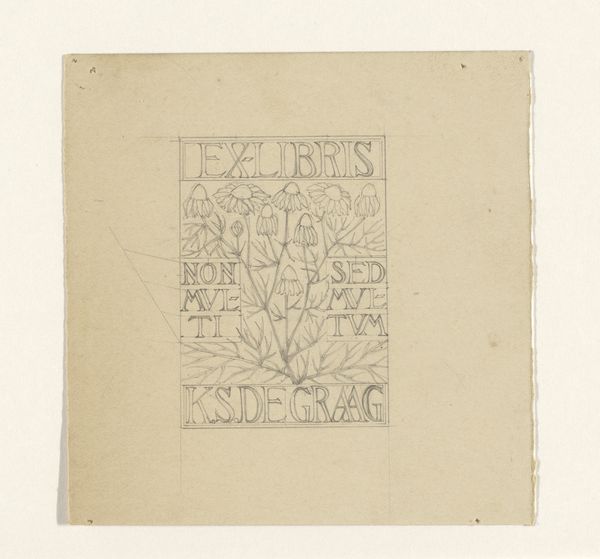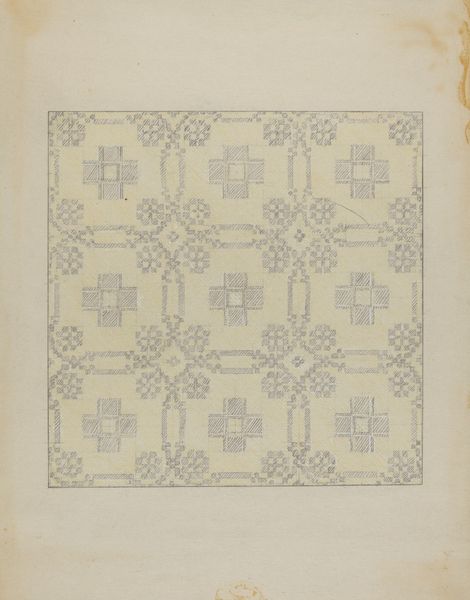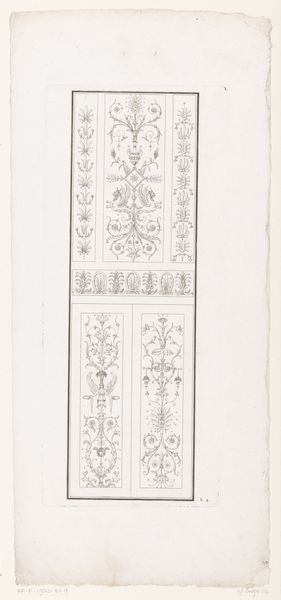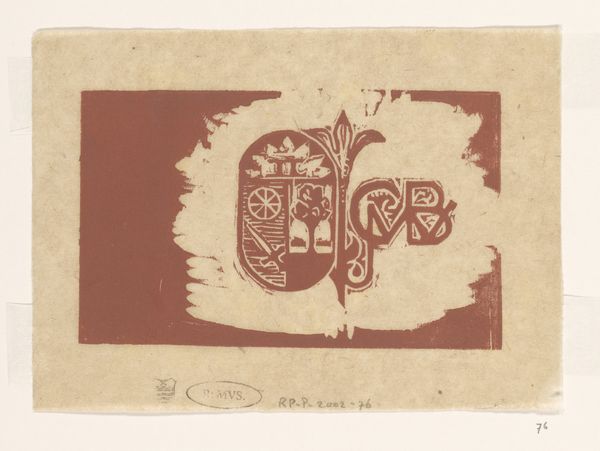
drawing, graphic-art, print, relief-print, woodcut
#
drawing
#
graphic-art
#
art-nouveau
# print
#
relief-print
#
woodcut effect
#
linocut print
#
woodcut
#
symbolism
Dimensions: height 106 mm, width 74 mm
Copyright: Rijks Museum: Open Domain
Editor: This is a woodcut called "Ex libris van MvH," created by Bernard Willem Wierink sometime between 1871 and 1939. It’s currently housed at the Rijksmuseum. I'm immediately struck by its archaic style and symbolic elements... almost like an alchemical drawing. What do you see in it? Curator: It's a fascinating piece, isn't it? "Ex Libris" meaning "from the books of..." This wasn't just art, but a marker of ownership, a personal statement. The woodcut style firmly places it within a historical context of craft and printing traditions, but notice how Wierink incorporates symbolism associated with Art Nouveau and perhaps even broader symbolic languages, and then reinterprets them. What do these symbols mean to you? How do they relate to prevailing philosophical or sociopolitical positions? Editor: I see what appears to be zodiac signs, alchemical symbols like the symbol of Mercury, and floral motifs common in Art Nouveau. I am curious, does the reinterpretation of signs denote specific identity and cultural meanings? Curator: Precisely. The deliberate act of reinterpretation points towards a reclaiming or perhaps even a subversion of established cultural narratives. Art Nouveau, in its essence, sought to democratize art by making it accessible and part of everyday life. When combined with the personal nature of an ex libris, what stories do you think it is pointing us to, regarding gender, class, or race perhaps? Editor: It speaks to me about a world of knowledge and self-expression, a space created to hold personal histories, almost creating its own visual language accessible to only a select few. Curator: Yes! And think about who had access to books, and thus, these personalized markers of ownership, during this period. What did this represent in terms of class, education and access? Considering these questions helps us to fully understand and respect the art that resonates so powerfully through the decades. Editor: I'll certainly look at art—and books!—differently from now on!
Comments
No comments
Be the first to comment and join the conversation on the ultimate creative platform.


